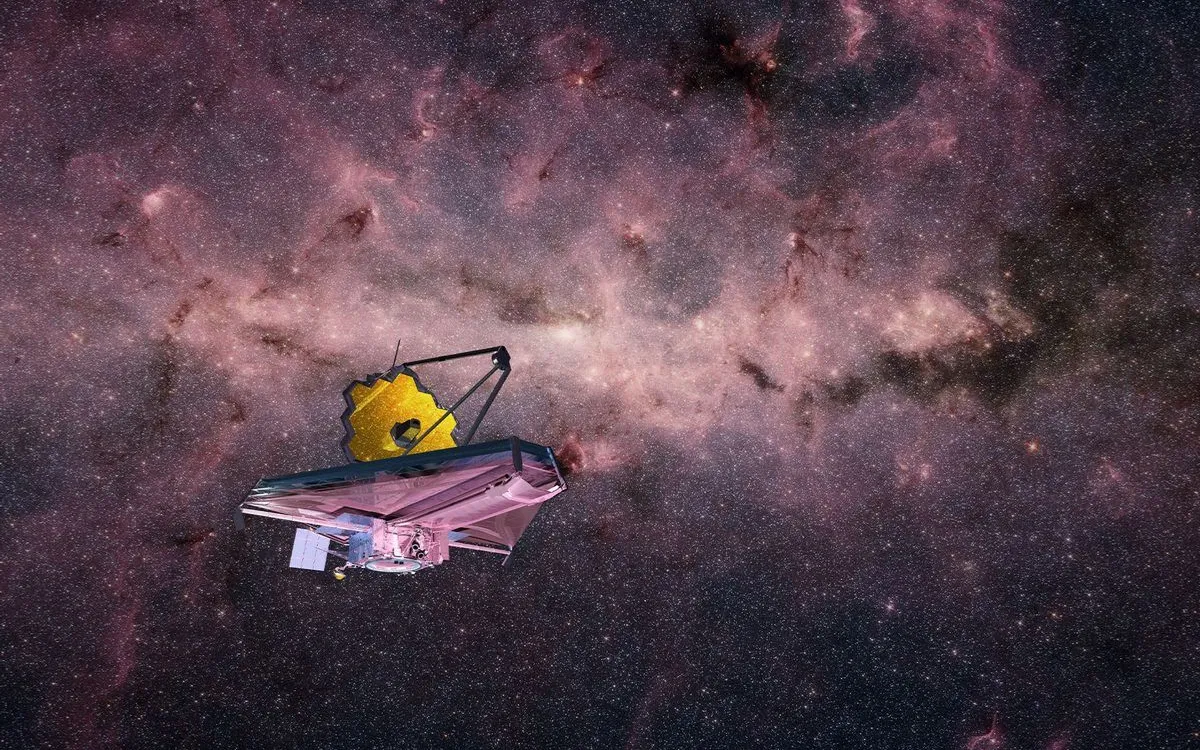
The James Webb Space Telescope (JWST) has made a historic advancement in astronomy by directly observing carbon dioxide (CO2) in the atmospheres of exoplanets for the first time. This significant achievement was announced by NASA on March 17, 2025, following a series of detailed observations conducted in the HR 8799 system, located 130 light-years away from Earth.
This groundbreaking discovery is particularly noteworthy due to the innovative method utilized to detect CO2—known as direct imaging. Traditionally, astronomers have relied on the transit method to detect exoplanets, which involves observing the temporary dimming of a star's light as a planet passes in front of it. While this method has previously enabled the JWST to indirectly detect CO2 on exoplanets like the gas giant WASP-39 in 2022, the observations in the HR 8799 system employed the telescope’s advanced coronagraph instruments. These instruments effectively block out the overwhelming light from bright stars, allowing scientists to focus on the emitted light from the planets themselves. This revolutionary approach marks a significant step forward in exoplanetary research.
Lead study author William Balmer, an astrophysicist at Johns Hopkins University, likened this technique to using a flashlight to locate fireflies near a lighthouse: “It’s like putting your thumb up in front of the sun when you’re looking up at the sky.” The JWST’s ability to directly capture light from these exoplanets has yielded an abundance of new data, including the critical chemical signature of CO2 present in their atmospheres.
While the gas giants within the HR 8799 system are considered inhospitable to life due to their harsh environmental conditions, the detection of CO2 carries profound implications for our understanding of planetary formation. According to a study published in The Astrophysical Journal, the new findings suggest that these planets may have formed similarly to Jupiter and Saturn, through a “bottom-up” process where icy particles coalesce to create a solid core. This raises intriguing possibilities about the moons that orbit these gas giants, which could be more favorable candidates for hosting life.
Similar to how some of Jupiter’s moons, such as Europa, are believed to harbor vast oceans beneath their icy exteriors, moons orbiting these newly observed exoplanets might also possess the necessary conditions for life. Current missions aimed at investigating the potential for life on Europa and other moons represent a crucial step in this exploration, igniting hope that extraterrestrial life could exist in forms vastly different from those found on Earth.
As the James Webb Space Telescope continues to unveil the mysteries of the universe, this latest achievement in detecting CO2 in exoplanet atmospheres paves the way for future exploration. Scientists are eager to further investigate the chemical compositions and potential habitability of these distant worlds. The ongoing research into moons surrounding gas giants could ultimately redefine our understanding of where life may thrive beyond our solar system, marking an exciting era in the field of exoplanet exploration.